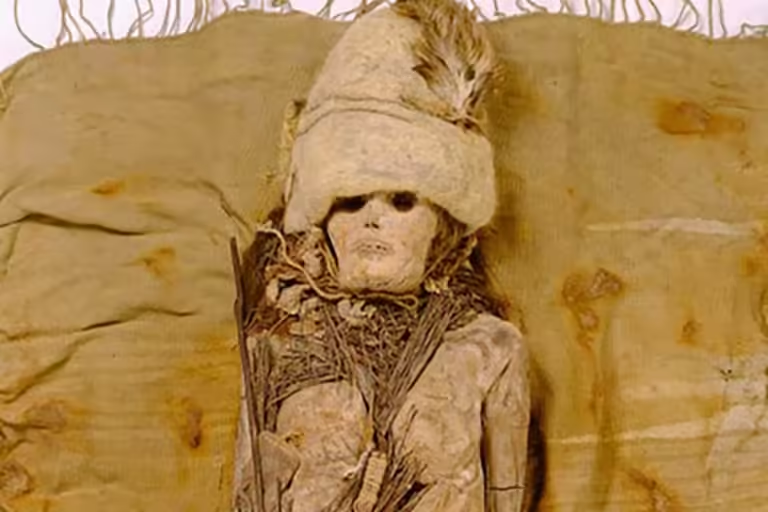
Bronze Age mummies from China’s Xinjiang Uyghur Autonomous Region
Wenying Lee
A mysterious white substance found in a Bronze Age mummy in China has turned out to be the world’s oldest known cheese.
Cheese remains were first discovered about 20 years ago, smeared on the head and neck of a 3,500-year-old mummy discovered in the Xiaohe Cemetery in the Xinjiang Uyghur Autonomous Region.
It has long been suspected that this substance originates from fermented dairy products, but it is only now that molecular tools are powerful enough to confirm its composition.
Fu Qiaomei of the Chinese Academy of Sciences in Beijing and her colleagues identified the substance as a type of kefir cheese based on the presence of yeast, lactic acid bacteria and proteins from ruminant milk in their samples.
Kefir is a traditional drink made by fermenting milk using kefir grains, which are pellets of microbial cultures, like sourdough starter.
According to Hu, the substance was no longer immediately recognizable as kefir cheese: “These pale yellow cheese samples were old, had no odour, were powdery to the touch and were a bit crumbly,” she said.
Archaeological evidence of cheese-making techniques dating back as far as 7,000 years has been found in pottery, but no one has ever discovered a cheese that old.
The team found goat and cow DNA in the samples, but unlike the mixed cheeses often found in traditional Greek and Middle Eastern cheesemaking, the milk from each animal appears to have been kept separate, likely because goat’s milk has less lactose and is less likely to cause intestinal problems if ingested.
Hu and her colleagues Lactobacillus kefiranofaciens The researchers extracted bacteria from dairy samples and compared it to the genomes of modern strains used to make kefir.
Hu says modern strains have evolved to suit the tastes of cheese consumers: DNA analysis suggests that new strains were selected to provoke less of an immune response in the human gut, for example.
topic:

